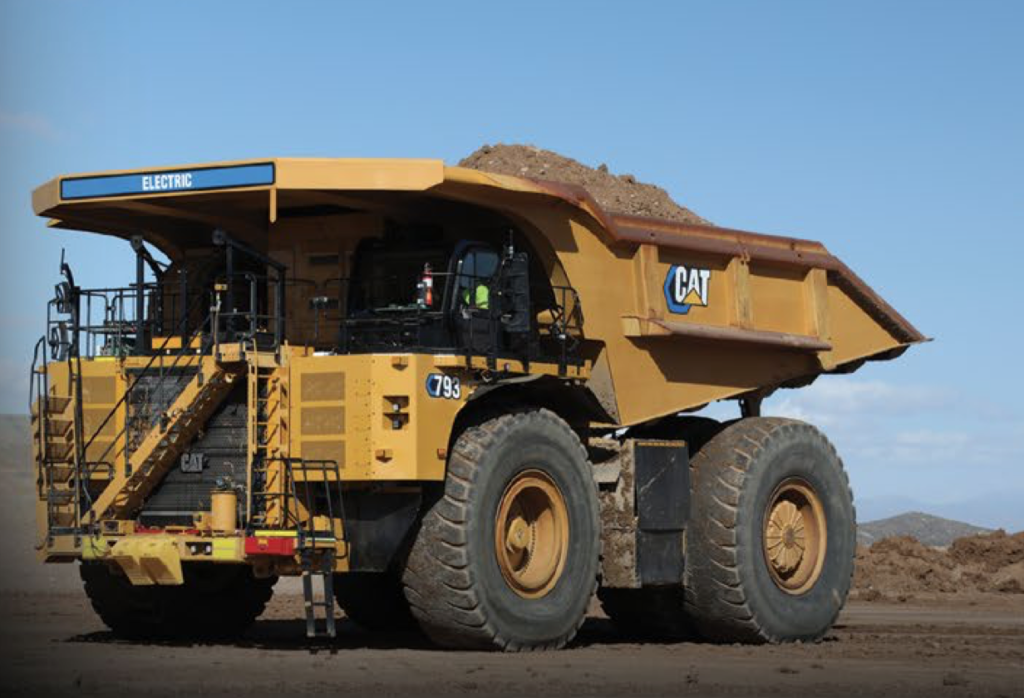Rio Tinto’s Gudai-Darri is one of the most advanced mines in the world from a technology standpoint and it hosts a whole suite of technological innovations, including autonomous trucks and drills. It has 26 Caterpillar 793F autonomous haul trucks, three Cat MD6310 and two MD6250 autonomous drills. The trucks implement real-time ore tracking using sensors to provide live dig face progression, while data-informed modelling from the drills helps to build more accurate assessments of existing ground conditions and improve safety.
In collaboration with Caterpillar, Rio Tinto is advancing the development of zero-emissions autonomous haul trucks. Once development is complete, it is anticipated the world’s first operational deployment of Caterpillar 793 zero-emissions autonomous haul trucks will be at Gudai-Darri.
The mine also has the world’s first autonomous water carts. The new vehicles, developed in partnership with Caterpillar, are primarily used for dust suppression on site, enhancing productivity by enabling mine operations to digitally track water consumption and reduce waste. The vehicle’s intelligent on-board system detects dry and dusty conditions on site, triggering the application of water to roads to keep them in good condition.
Gudai-Darri also utilises autonomous trains (AutoHaul™). Fully operational in June 2019, AutoHaul™ was the world’s first fully autonomous long distance, heavy-haul rail network. The autonomous train is monitored remotely by operators from Rio Tinto’s Operations Centre in Perth more than 1,500 km away. The mine also has Rio Tinto’s first rotable bucketwheel reclaimer. Traditionally reclaimer maintenance requires a prolonged shutdown while several components are removed. This patented world first enables the entire bucket wheel module to be changed out for maintenance, improving safety and efficiency.
The Gudai-Darri laboratory is fully automated and integrated with the mine. Production samples (both lump and fines) enter the lab via a conveyer from the sample station and are transferred to the automated production cell by a robot. This facility provides excellent visibility of the ore grade being stockpiled on site.
Rio Tinto is also using technology to provide its people with in-field access to real-time data – “connecting our teams to each other, to our work and our assets. Through tablets, team members can access many of the applications they require out in the field thereby eliminating the need for paper-based systems and reducing unnecessary travel.”
A Gudai-Darri digital asset is the first within Rio Tinto and enables its team members to visually navigate the asset, plan their work using a (to scale) 3D model and view or download associated technical data and documents. The same digital asset data is used to provide a feature rich, interactive 3D environment for virtual reality training.
In terms of energy sourcing, the mine’s solar farm consists of about 83,000 solar panels made up of photovoltaic cells to convert sunlight into electricity. Capacity is up to 34 MW and is expected to supply about a third of the mine’s average electricity demand once fully commissioned.
On actual production, Rio Tinto says it is seeking to increase capacity at the operation to 50 Mt/y at a cost of around $70 million (A$130 million) through incremental productivity gains. The $3.1 billion Gudai-Darri mine, in the Pilbara, Western Australia, began production last year and reached its planned annual capacity of 43 Mt in less than 12 months from first ore.
The planned capacity increase will be achieved through upgrades within the plant including chutes and conveyor belts, as well as utilising an existing incremental crushing and screening facility already on site. The larger operation will require additional mining fleet, including haul trucks and diggers, as well as a small expansion of the product stockyards. The capacity increase is subject to environmental, heritage and other relevant approvals.
Rio Tinto Iron Ore Managing Director of Pilbara Mines, Matthew Holcz, said: “What we have learnt during the rapid ramp-up of Gudai-Darri has given us the confidence to find better ways to increase capacity at our newest and most technologically advanced mine. Rather than taking a capital-intensive approach to replicate existing infrastructure, we have now identified a low-capital pathway to creep capacity to 50 million tonnes a year.” The capital intensity of any increase in capacity of Gudai-Darri is expected to be around $10 per tonne.











